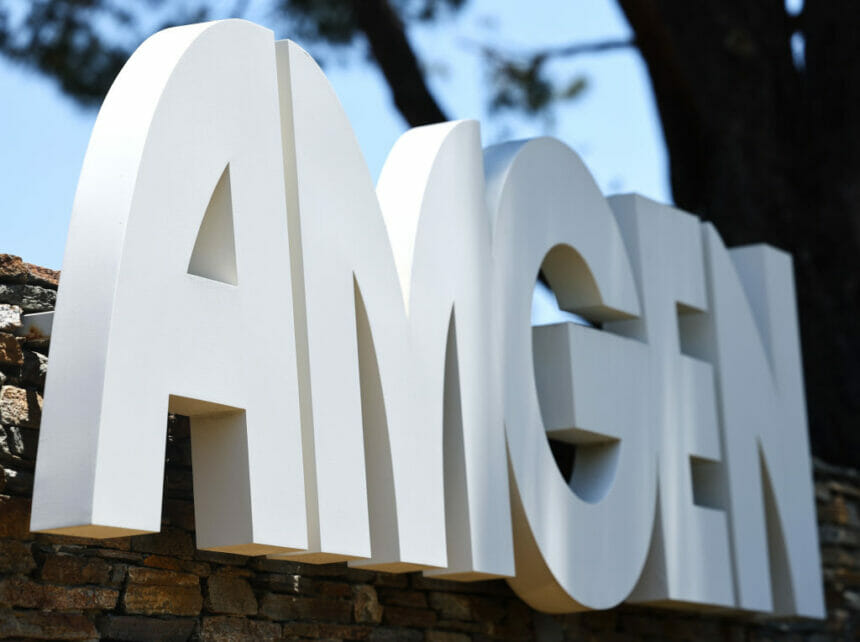Six months after Amgen closed its nearly $28 billion acquisition of Horizon Therapeutics, the pharma giant is banking on the rare disease pipeline scored in the deal to buoy its long-term growth.
In a conference call Thursday afternoon, Amgen provided an update on its rare disease ambitions — including a pipeline filled with currently approved products, as well as the new projects it has in the works.
To set the table, it’s important to understand that Amgen’s business is structured around four main pillars — general medicine, oncology, inflammation and now rare disease.
The Horizon acquisition infused Amgen with several rare disease drugs, including Tepezza for thyroid eye disease (TED), Krystexxa for uncontrolled gout — and Uplizna, a biologic for neuromyelitis optica spectrum disorder.
Now, the company is planning to build out its rare disease pipeline further and expand internationally, all in the name of long-term growth.
“Rare disease makes financial sense,” said Murdo Gordon, EVP of global commercial operations at Amgen. “Not only will rare disease be additive to long-term revenue growth, but we anticipate that the Horizon deal will be accretive to our non-GAAP earnings per share in 2024.”
At the heart of the strategy is a robust pipeline and a strong in-line portfolio of innovative products, Gordon continued.
“We expect to work hard and swiftly to develop this portfolio and to double-down on underscoring our dedication not only to near-term growth but also to sustained, long-term expansion,” he said.
Rare disease has been growing reliably for Amgen in recent years, with net sales from this segment rising from $2.2 billion in 2020 to $3.9 billion in 2023.
Gordon added Amgen expects sustained growth across all pillars through the end of the decade, driven by a combination of its established marketed products and other burgeoning projects underway.
Part of that growth strategy involves expanding Tepezza internationally, with Amgen planning to initially focus its efforts in Japan and Europe.
Tepezza already has an orphan drug designation in Japan and will likely launch there in 2025. Additionally, Amgen also plans to submit Tepezza for approval in Europe.
“Contributions from international expansion will be additive,” Gordon said, though the company will still see “significant opportunity” within the U.S. given “relatively low penetration for each of these products.”
Amgen will also launch a Phase 3 trial this year that investigates a subcutaneous version of the drug, which is currently administered as an infusion every three weeks.
The pharma also provided updates on Krystexxa, noting it would focus on accelerating the urgency in treating uncontrolled gout, as well as redefining the drug with immunomodulation therapy as being the standard of care. Amgen will also test shorter infusion duration versions of the drug in a Phase 4 clinical trial.
In addition to Uplizna, the fourth drug already on the market is Tavneos — an inhibitor for ANCA-associated vasculitis. Tavneos represents a “significant advancement” in treating the condition as well as other ultra-rare diseases, the pharma noted.
Among its early-stage products, Amgen touted dazodalibep for Sjogren’s disease, an autoimmune disease that attacks the exocrine glands. Dazodalibep is currently in a Phase 3 trial. It also pinpointed daxdillimab, which is being investigated in Phase 2 trials for discoid lupus erythematosus (DLE), dermatomyositis and anti-synthetase inflammatory myositis.
Finally, it listed fipaxalparant as another pipeline asset that’s being investigated in diffuse cutaneous systemic sclerosis (dcSSc) and idiopathic pulmonary fibrosis (IPF).
The update comes on the heels of the pharma’s Q4 2024 earnings report, which showed total revenues increased 20% to $8.2 billion, with $1 billion in sales attributed to the Horizon acquisition.
To read a May 2024 article about Amgen’s profit sliding and revenue jumping in Q1, click here.







